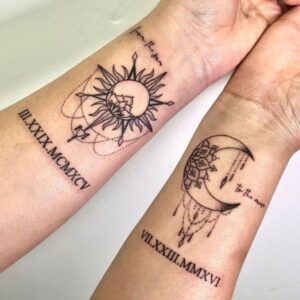Scientists have spent years assembling evidence to fill out the intricate Neanderthal timeline from emergence to extinction, and the latest update has cemented a date for Neanderthal interbreeding with humans. A new pair of studies published in the journalScience sheds light on the duration of gene flow between Neanderthals and humans, confirming that it lasted from approximately 50,500 years to 43,500 years ago.

The two collaborative studies — involving a team of researchers from University of California, Berkeley and the Max Planck Institute for Evolutionary Anthropology in Leipzig, Germany — settled upon an average date of 47,000 years ago for Neanderthal-human interbreeding. To get this specific date, the researchers analyzed 59 genomes from ancient humans who lived in Europe, Western Asia, and Central Asia between 2,000 years and 45,000 years ago, as well as genomes from 275 present-day humans.
Gene Flow Between Neanderthals and Humans

By comparing Neanderthal ancestry segments among humans from different time periods, the researchers could establish the years that Neanderthals and humans lived side-by-side in Eurasia. The extended period of gene flow, lasting about 7,000 years, matches archaeological evidence of overlap between the two hominin groups in Eurasia. Several early modern humans specimens — including ones that left behind fossils in Eastern Europe and Western Siberia — had previously been discovered to contain Neanderthal genes.
The studies create a clear picture for human migration out of Africa, suggesting that it was over by about 43,500 years ago based on the interbreeding period. Shortly after, at around 40,000 years ago, Neanderthals faced extinction, likely expedited by humans’ arrival.

The gene flow also provides insight on the spread of Neanderthal genes once humans began settling in other areas of the world. Today, this is reflected by a small amount of Neanderthal DNA (1 percent to 2 percent) retained in most people living outside of Africa, though this varies slightly by population. East Asians, for example, have potentially up to 20 percent more Neanderthal DNA than Europeans or West Asians.
“Diversification of humans outside of Africa may have begun during or soon after the Neanderthal gene flow, which could partially explain the different levels of Neanderthal ancestry among non-African populations and also reconcile our dates with archaeological evidence for the presence of modern humans in Southeast Asia and Oceania by about 47,000 years,” said Benjamin Peter, a research group leader at the University of Rochester and the Max Planck Institute, in a statement.
Neanderthal Genes Live On
The UC Berkeley and Max Planck Institute team took their analysis a step further and uncovered areas of the modern human genome that carry Neanderthal genes and areas that lack Neanderthal influence entirely, called Neanderthal deserts.
“We find that very early modern humans from 40,000 years ago don’t have any ancestry in the deserts, so these deserts may have formed very rapidly after the gene flow,” said Leonardo Iasi, a lead author of the genome analysis study and a graduate student at the Max Planck Institute, in a statement. “We also looked at the changes in Neanderthal ancestry frequency over time and across the genome and found regions that are present at high frequency, possibly because they carry beneficial variants that were introgressed from Neanderthals.”
The traits that humans inherited from Neanderthals — tied to genes that affect the immune system and skin pigmentation — would have helped them adapt to new environments outside of Africa. Some genes, such as one that gave humans a protective advantage to deal with coronavirus, may have become more beneficial later on, as environments changed.
The areas of the human genome that had no traces of Neanderthal ancestry, the studies suggest, were quickly stripped of Neanderthal sequences through evolution after the gene flow. These sequences, at the time, may have had negative consequences for human wellbeing, which is why they disappeared and left the deserts seen in the human genome today.
The relationship between Neanderthals and humans yielded intriguing genetic results that still live on to this day, yet this story has another chapter that researchers still explore. The role of Denisovans, another ancient hominin group that likely interbred with humans, still poses questions. Denisovan DNA is not as prevalent in modern human genomes, but Southeast Asian and Pacific Islander populations have a small amount. A deeper look at Neanderthal and Denisovan DNA in humans will ultimately help researchers understand the full extent of ancient human migration and genetic interactions.
ArticleSources
Our writers at Discovermagazine.com use peer-reviewed studies and high-quality sources for our articles, and our editors review for scientific accuracy and editorial standards. Review the sources used below for this article:
- Science. Neandertal ancestry through time: Insights from genomes of ancient and present-day humans
- Nature. Initial Upper Palaeolithic humans in Europe had recent Neanderthal ancestry
- Natural History Museum. Neanderthal extinction may have been caused by sex, not fighting
Jack Knudson is an assistant editor at Discover with a strong interest in environmental science and history. Before joining Discover in 2023, he studied journalism at the Scripps College of Communication at Ohio University and previously interned at Recycling Today magazine.





